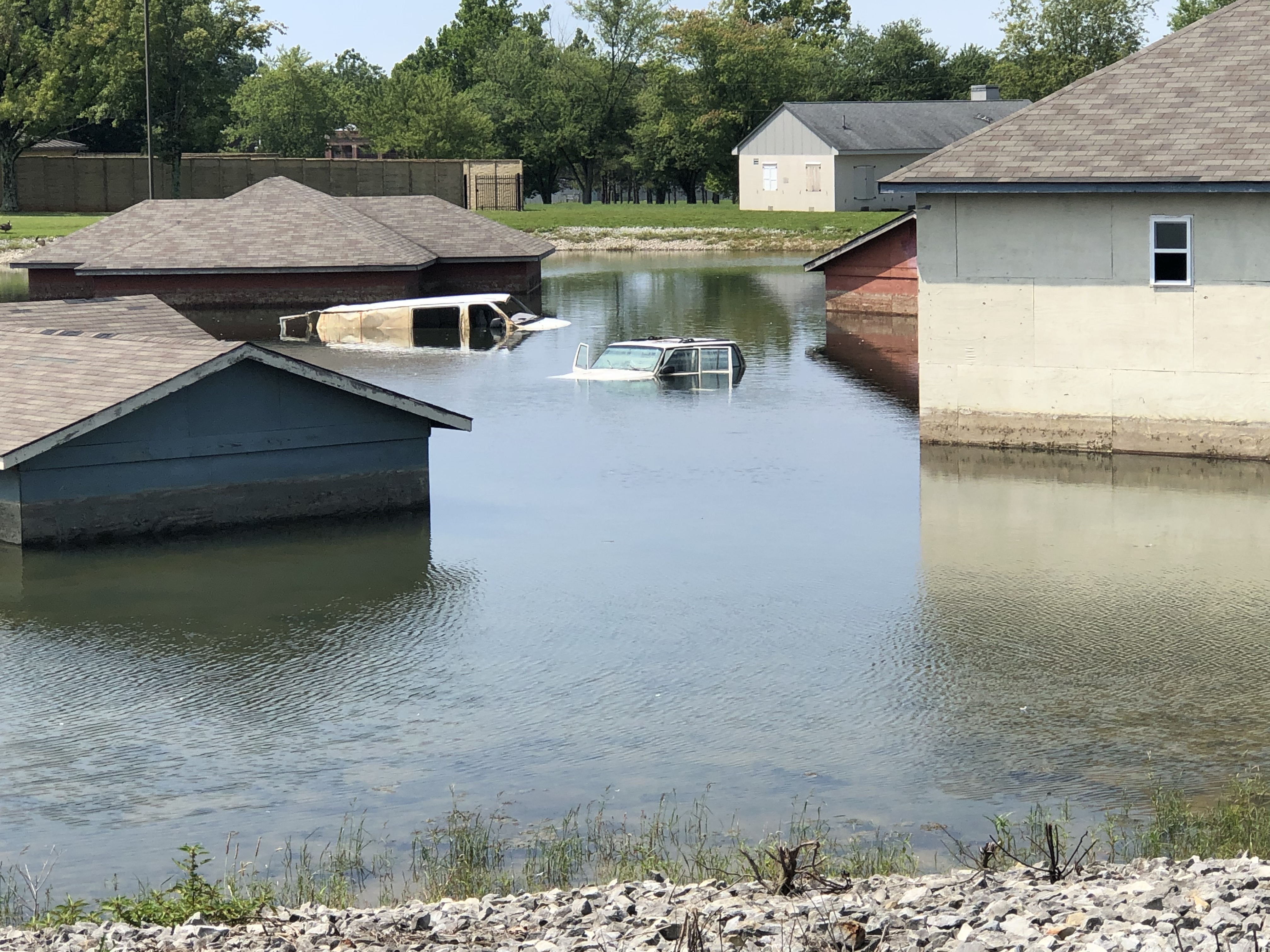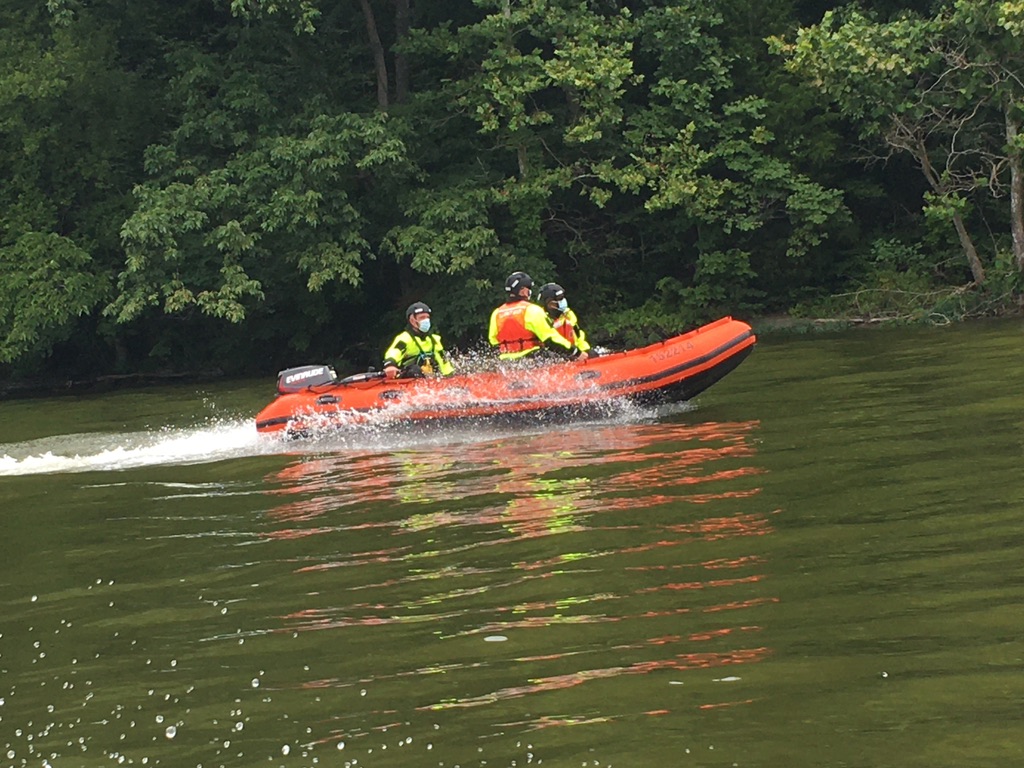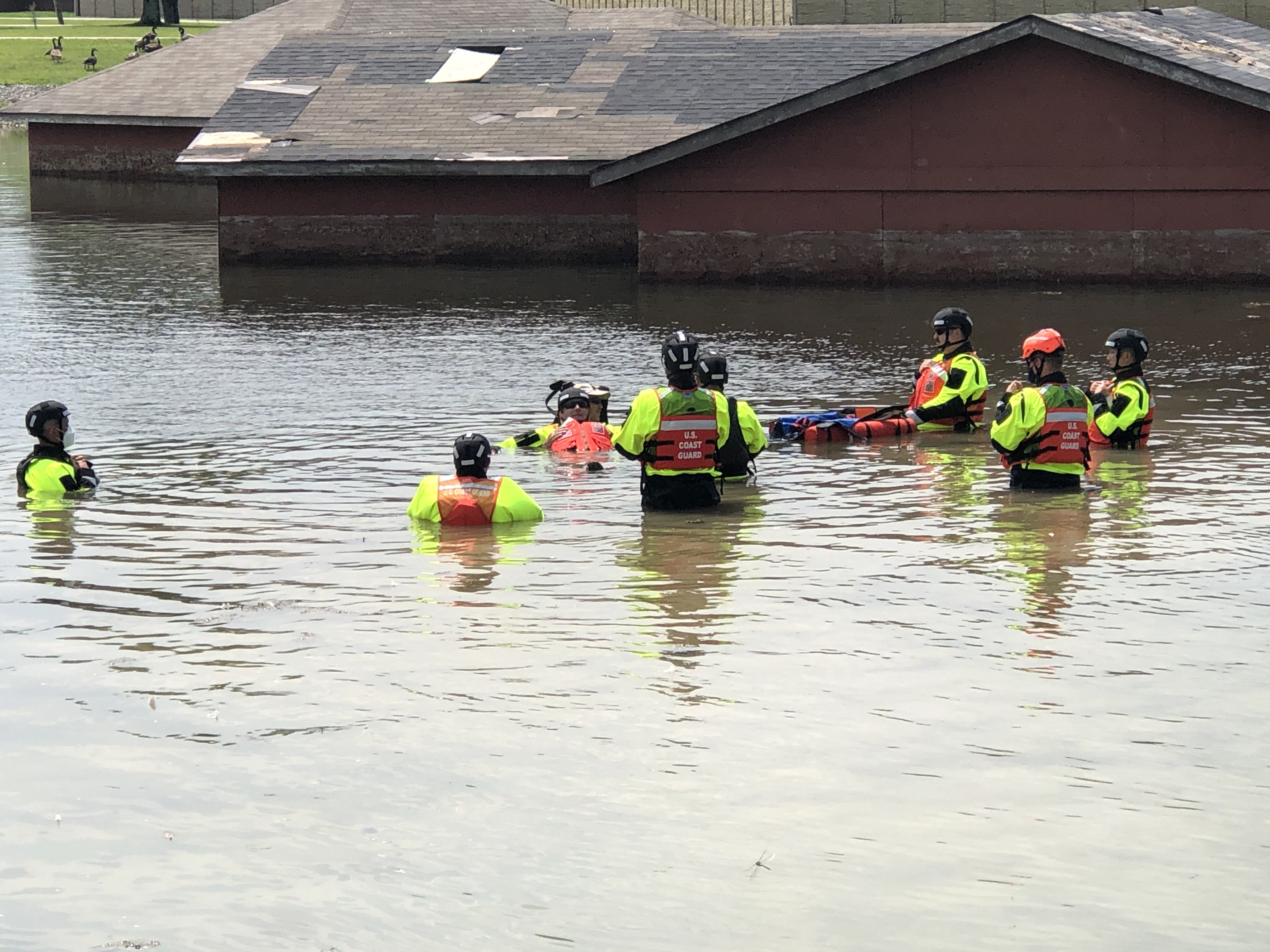In August 69 Coast Guardsmen participated in the Service’s inaugural flood response training in Butlerville, IN. These members received this training because of the likelihood that they will be called on to respond to a flood within the community they serve.
Despite the Coast Guard’s history of flood response, until this year, Coast Guardsmen did not receive training in the specifics of flood response. This inaugural training ensures that the members are equipped with the knowledge and experience to successfully respond to flooded communities.
“Members have been asking for some type of formalized training for years,” said Lt. Cmdr. Bradford Clark, one of the advocates of the Office of Boat Forces flood response training. “The Coast Guard needed a standardized training system that allows individuals to be exposed to flood scenarios in a safe way, buying down risk and better preparing our members for responding to flooding events, such as hurricanes or seasonal floods.”
Individuals from the Maritime Safety and Security Teams (MSST), Strike Teams, and District 8 units are completing this specialized training as the teams most likely to be called on to response to flooded communities. The participants provide important feedback that will be used to improve the program moving forward.
Petty Officer 3rd Class Kristofer Ettore, a boatswain’s mate attached to MSST Houston, reinforced the need for this training when asked about his experience at flood response training. “I’ve been a member for three years, so I was part of the group that responded to Hurricane Harvey,” said Ettore. “During Harvey we had no real set structure for our flood response. We were just going. But, after going through this flood response training, I now feel much more prepared and am sure I will do a better job responding to these types of disasters moving forward.”
After careful review of after-action reports and lessons learned from previous hurricane and other flood responses, Clark, along with other members within the Office of Boat Forces, created a comprehensive training that would properly expose members to the risks and realities of working in flooded communities. The five-day training includes both classroom and field instruction in Butlerville, IN, at the Army National Guard’s Training Facility.
The training location, Muscatatuck Urban Training Center (MUTC), includes a flooded community and reservoir that the Coast Guard uses for its hands-on training. Participant and Petty Officer 1st Class Andrew Yeckley, a boatswain’s mate from District 8 described most Coast Guard trainings as “death by PowerPoint.” Flood response is more realistic and lets “individuals practice missions that they would be expected to perform in most situations.”
This hands-on training includes practicing missions such as rescuing a disabled or injured person stranded on a rooftop, approaching a survivor or multiple survivors in the water, and handling small animals properly in the water. It also prepares members to communicate effectively with other agencies involved in flood response, namely the Federal Emergency Management Agency (FEMA).
“[The] Coast Guard is no longer just driving boats and picking people up out of houses,” said Yeckley. “[The] Coast Guard is growing for the better. This training shows us that we’re expected to do more, and now we will have the knowledge and capability to better serve these flooded communities.”
Clark added, “For the most part, our members are used to operating from the boat. Flood response training gets individuals out of the boat and into the water. It prepares them for how to navigate the terrain of a flooded environment, both suburban and urban. It allows them to practice their technique and learn how to look for different hazards flooded communities have.”
For example, participants of flood response training learn how to wade in flooded water with a walking stick. While floodwaters may only be one foot high, the terrain of an urban environment changes constantly. If people do not properly walk using a stick or PVC pipe to check the terrain, they can inadvertently injure themselves by falling through a manhole opening to the city’s sewer system or running into sharp objects that are obscured by floodwaters.
“While the program is still in its beginning stages, we are confident that this is the best direction to go in,” Clark said. “We think this training strikes the best balance between how the Coast Guard can equip and prepare our members for this type of an event without overly burdening them, since flooding occurs only seasonally.”
When asked where he sees the program going in the future, Clark did not hold back. “The goal is that eventually, years from now, every member of these Coast Guard units will have been exposed to flood response training. Until then, members who have gone through the training will eventually give a modified version of the training to their unit upon their return, which is still a work-in progress.”
Trainings like the flood response program prioritize the safety of our members, and the well-being of the communities the Coast Guard serves.
Petty Officer 1st Class Kenny Tucker, a boatswain’s mate on the Gulf Strike Team who also participated in the training, was impressed by the caliber of the training, “This course was one of my top three favorite courses I’ve ever taken in my 20-year career.” With many of his Gulf Strike Team members on standby for Hurricane Laura, Tucker was grateful to have completed flood response training earlier in the month. “We went to school two weeks ago. Being able to use the knowledge we learned right away is always great.”
“No matter how much time you’ve done it, you can always learn more – more tactics, techniques, and just help make our mission better and more complete, “Tucker said.
With the inaugural training commencing in late August, flood response training prepares for the next round of students as they continue to improve and keep our service ready, relevant, and responsive
 |
 |
 |
|
BUTLERVILLE, IN - A glimpse of the flooded town that Coast Guard members walked into early this August. Pictured is the Muscatatuck Urban Training Center (MUTC)’s flooded village, which includes flooded houses, vehicles, and street signs, awaits members who will use this environment to train for missions such as rescuing survivors from rooftops.
|
BUTLERVILLE, IN - Coast Guard Members practice water navigation with the help of an instructor at the Muscatatuck Urban Training Center (MUTC) in August 2020. Members learn how to navigate deep floodwaters to ensure their tactics and techniques are up to date, keeping them safe from hazards obstructed by the water. (U.S. Coast Guard photo) |
BUTLERVILLE, IN - Coast Guard members become accustomed to driving CRRCs, or inflatable boats through deeper floodwaters during flood training at the Muscatatuck Urban Training Center (MUTC) in August 2020. During this training members have an opportunity to learn how to operate these types of boats in the case they need to respond to a flooded community. (U.S. Coast Guard photo.)
|